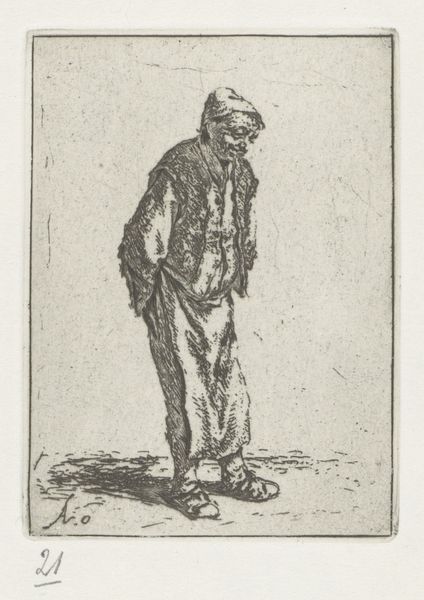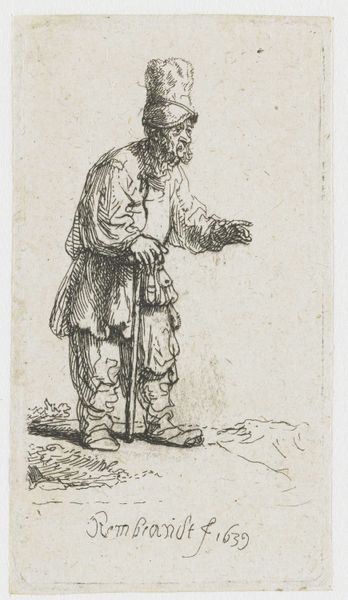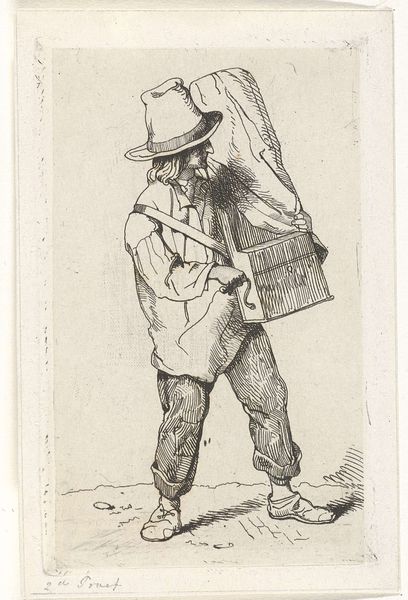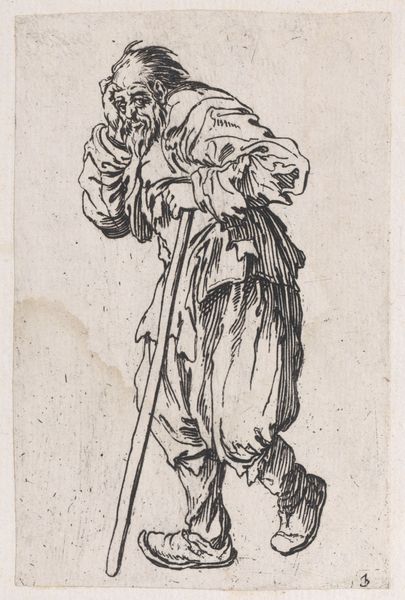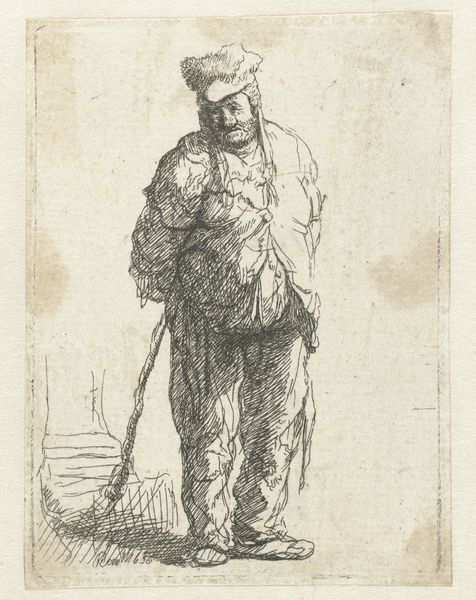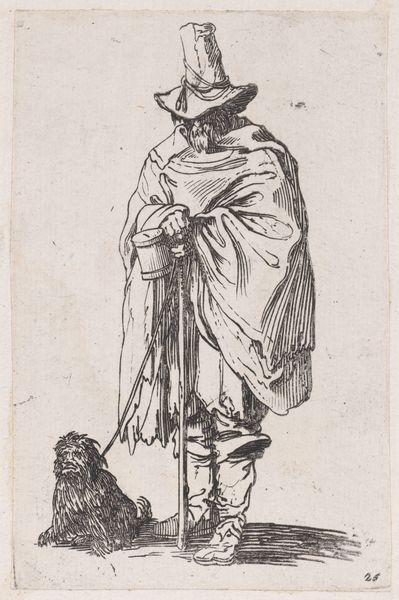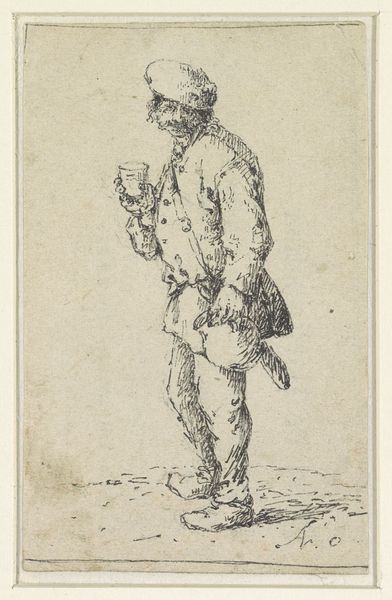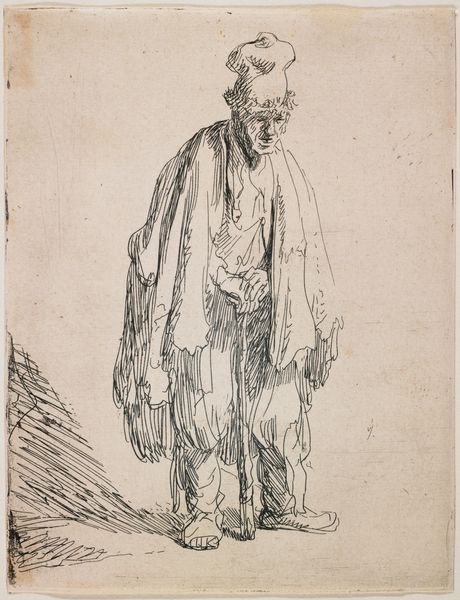
#
light pencil work
#
quirky sketch
#
pen sketch
#
pencil sketch
#
old engraving style
#
personal sketchbook
#
ink drawing experimentation
#
pen-ink sketch
#
sketchbook drawing
#
sketchbook art
Dimensions: height 87 mm, width 65 mm
Copyright: Rijks Museum: Open Domain
Adriaen van Ostade created this print of a standing farmer in the Netherlands, sometime in the mid-17th century. The image is a study of class and labor, common themes in Dutch Golden Age art. Notice how the farmer's posture and clothing speak to his social standing. He huddles into himself, seeking warmth and protection, his worn garments suggesting a life of hardship. The image reflects a society undergoing significant economic and social changes. The Dutch Republic was a burgeoning commercial power, but this prosperity didn't reach all levels of society. Artists like van Ostade were keen to portray the lives of ordinary people, often with a critical eye toward social inequalities. Was this meant to be seen as an honest depiction of rural life, or does it rely on caricature? Further research into the artist's biography, the print market of the time, and the representation of peasants in Dutch art can reveal more about the image's social context. By looking at the historical conditions in which art is made, we can better understand its meanings and implications.
Comments
No comments
Be the first to comment and join the conversation on the ultimate creative platform.

